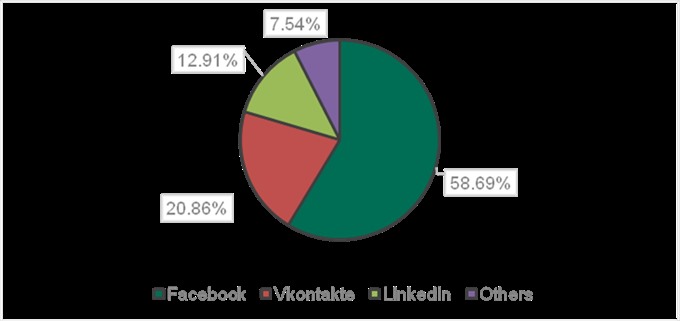 Economy
Economy

Kaspersky Lab said in the first quarter of 2018 its anti-phishing technologies prevented more than 3.6 million attempts to visit fraudulent social network pages, 60 per cent fake Facebook pages.
 |
| The distribution of different types of social network phishing detected by Kaspersky Lab in the first quarter of 2018. — VNS Photo |
HCM CITY — Kaspersky Lab said in the first quarter of 2018 its anti-phishing technologies prevented more than 3.6 million attempts to visit fraudulent social network pages, 60 per cent fake Facebook pages.
It shows that cybercriminals are still doing what they can to get their hands on personal data, the company said in a report on spam and phishing.
Social network phishing is a form of cybercrime that involves the theft of personal data from a victim’s social network account.
The fraudster creates a copy of a social networking website such as a fake Facebook page and tries to lure unsuspecting victims to it, forcing them to give up personal data such as their name, password, credit card number, PIN code, and more.
Nadezhda Demidova, lead web content analyst at Kaspersky Lab, said: “The continuous increase in phishing attacks, targeting both social networks and financial organisations, shows us that users need to pay more serious attention to their online activities. Despite the recent global scandals, people continue to click on unsafe links and allow unknown apps access to their personal data.
“Due to this lack of user vigilance, the data on a huge number of accounts gets lost or extorted from users. This can then lead to destructive attacks and a constant flow of money for the cybercriminals.”
To protect themselves from phishing, Kaspersky Lab experts advise users to always check the link address and the sender’s email before clicking on anything. But even better is to not click on the link but instead type it into the browser address line, they said.
Before clicking on any link, people should check if the link address shown is the same as the actual hyperlink, and this can be checked by hovering the mouse over the link, they said.
Users should only use a secure connection, especially when they visit sensitive websites, and check the HTTPS connection and domain name before opening a webpage, they said. — VNS









